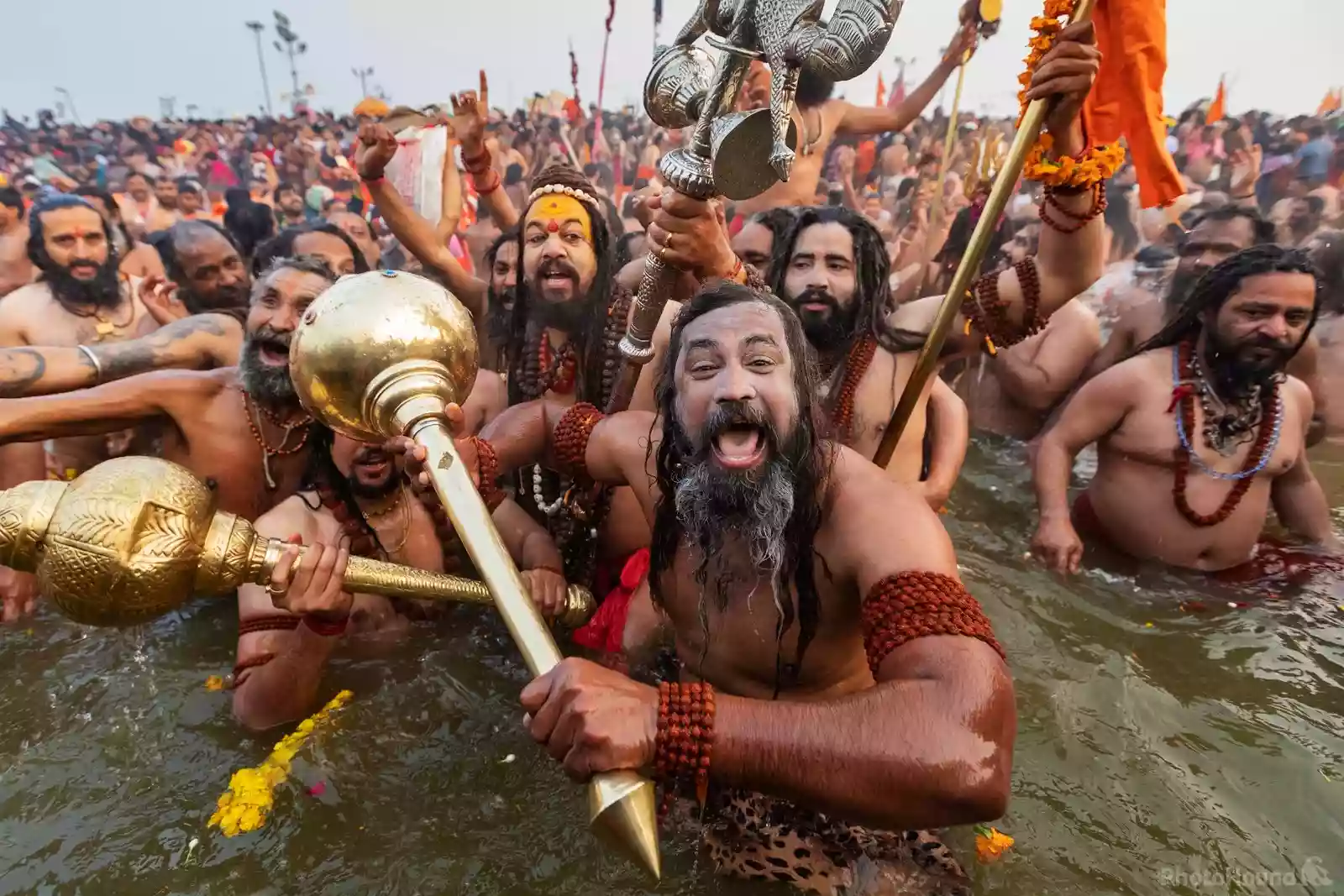.gif)
.gif)
Kumbha Mela festival is a significant pilgrimage event, with a holy bath at the sangam believed to increase purification by one hundred times.

A bathing spectacle led by naked ash-smeared ascetics.” Here’s why it’s essential to shun these narratives. Let’s delve into its history and discover what makes Kumbh Mela unique.
Kumbha Mela beckons the very soul of our existence, calling our higher self to shake off attachments to worldly life and step toward eternity. While others may attribute strong reactions towards it to its being opposed to Western culture, at any rate, the Kumbha Mela stirs the thoughts and emotions of most of us. Kumbha Mela represents all that is India, past and present.
Astrologers have planned these six significant days for taking a holy bath during the Kumbha Mela based on astrological calculations from the Rig Veda: Purnima (full moon), Makar Shankranti, Mauni Amavasya (black moon), Vasant Panchami (fifth day of the new moon), Magh Purnima (full moon), and Shiva Ratri (appearance day of Shiva). These days are deemed most auspicious for bathing.
The aristocratic distinction of being known as Kalpvasis, or Kumbha residents, is bestowed upon pilgrims who stay for the entire 41-day Kumbha Mela and observe all of the significant holy baths.
The Kumbh Mela's Origin:
India’s revered Vedic literatures explain the Kumbh Mela’s ancient beginnings as having developed from the universe’s earlier era, when the demons and demigods (a being who is partly human and partly a god) together created the nectar of immortality. According to legend, the demons and demigods gathered on the coast of the Milk Ocean, which is located in the cosmos’ celestial realm.
The demons and demigods devised a scheme to create the nectar of immortality by churning the milk ocean. After it was prodded, they decided to divide the nectar equally. The Mandara Mountain was used to churn the milk ocean, supported by Vasuki, the serpent king. Vishnu, in the form of a tortoise, supported the mountain and demigods for one thousand years.
The poison produced by the churning led to the creation of opulent items like Surabhi cows, Ucchaisrava horses, Airavata elephants, and the valuable Kaustubha-mani gem. The story revolves around a pot of immortal nectar, which is seized by the demigods and demons due to their fear of the demons drinking it.
The demigods hide the pot In four places – Prayag, Hardwar, Ujjain, and Nasik – each with mystical power. The demons eventually overpower the demigods and take possession of the nectar. Vishnu, as Mohini-murti, rescues them from fate by revealing her beauty, which makes the demons forget about drinking the nectar.
Kumbha Mela festival is a significant pilgrimage event, with a holy bath at the sangam believed to increase purification by one hundred times. The holy water’s potency is also believed to be increased by a thousand times, making Kumbha Mela the most auspicious place for bathing as per Hindu tradition. There is something about Kumbh Mela that always captivates one’s mind.